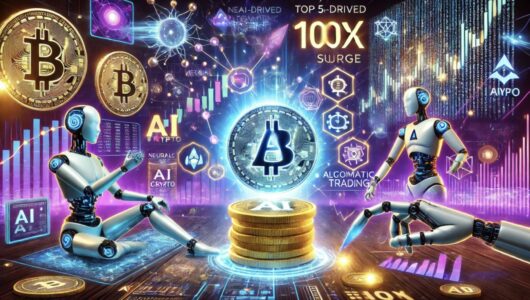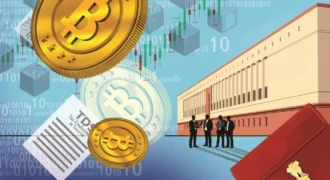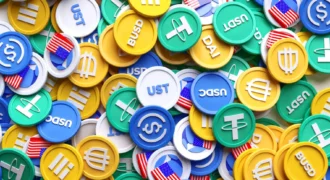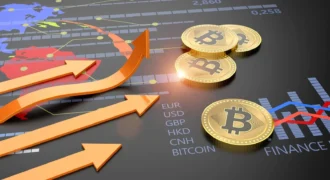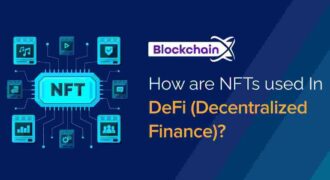Artificial intelligence has already transformed industries — from automating financial markets to generating human-like conversations and art. Now, it’s making its mark on the world of crypto and blockchain. The rise of AI-generated coins and NFTs (non-fungible tokens) signals a powerful fusion of machine creativity and decentralized technology — a frontier where algorithms create assets, communities shape value, and innovation redefines ownership.
But what exactly are AI-generated coins and NFTs, and why are they being called the next big digital frontier?
Let’s dive into this fascinating convergence of two of the world’s most disruptive technologies — AI and blockchain.
AI + Blockchain: A Match Made for the Future
AI and blockchain might seem like separate worlds at first glance. One focuses on intelligence and prediction, the other on security and decentralization. Yet, their combination is creating something entirely new — self-evolving ecosystems where value and creativity are no longer confined by human hands.
In simple terms:
- Artificial Intelligence brings cognition — the ability to learn, create, and adapt.
- Blockchain brings transparency — ensuring data, ownership, and transactions remain verifiable and immutable.
Together, they pave the way for a new class of digital assets that can be designed, minted, traded, and even evolved autonomously.
What Are AI-Generated Coins?
AI-generated coins are cryptocurrencies conceptualized, designed, or managed through AI algorithms. Unlike traditional tokens, which rely on human developers for code and economics, these coins can:
- Adjust tokenomics automatically based on market behavior.
- Optimize supply-demand ratios using predictive algorithms.
- Even evolve governance models over time through machine learning.
For example, AI could create a coin that automatically reduces supply when market volatility rises, or that rewards holders dynamically based on sentiment analysis across social media and trading platforms.
Some early experiments include:
- SingularityNET (AGIX): A decentralized AI marketplace where AI agents interact, trade, and improve collaboratively.
- Fetch.ai (FET): Using AI and machine learning for autonomous economic agents that optimize DeFi and data tasks.
- Gensyn: A project exploring decentralized AI training using blockchain incentives.
These examples show how AI coins aren’t just currencies — they’re intelligent economies in motion, capable of responding to global dynamics faster than traditional systems.
AI-Generated NFTs: Where Algorithms Become Artists
On the NFT side, AI has unleashed a new era of digital creativity. Artists are now training algorithms — like GANs (Generative Adversarial Networks) and diffusion models — to generate one-of-a-kind digital artworks that blend data, code, and imagination.
AI-generated NFTs are not manually designed; instead, they are produced through machine learning models that interpret datasets and generate unique visuals, music, or even virtual characters.
Some popular examples include:
- Botto: An AI artist governed by a DAO (Decentralized Autonomous Organization), where community members vote on which AI artworks are minted and sold.
- Alethea AI: Pioneering “intelligent NFTs” (iNFTs) — digital characters that use AI to talk, learn, and interact with humans.
- Art Blocks: A platform that hosts algorithmic art collections, some of which use machine learning to generate visually stunning and evolving designs.
This is art without a single brushstroke from a human hand, yet rich with emotion, innovation, and unpredictability — blurring the line between human and machine creativity.
How AI Is Changing the NFT Landscape
AI isn’t just creating art — it’s changing how NFTs are valued, traded, and experienced. Here’s how:
1. Dynamic NFTs
AI allows NFTs to evolve over time. Imagine an NFT that changes color based on Ethereum gas prices or shifts design according to global weather data. These “living NFTs” bring interactivity and emotion to digital ownership.
2. Personalized Creations
AI can generate NFTs tailored to each buyer’s preferences — style, mood, or even social media activity. This makes digital ownership feel deeply personal and unique.
3. Intelligent Marketplaces
AI algorithms can analyze buyer trends, detect wash trading, and recommend fair pricing — adding transparency and trust to NFT markets.
4. Narrative and Interaction
AI-driven NFTs can hold conversations, tell stories, or adapt behavior based on owner interaction. It’s the dawn of sentient digital collectibles — NFTs that feel alive.
The Economic Implications: New Models of Value
AI-generated coins and NFTs are redefining what value means in the digital economy. Traditional value systems depend on scarcity and human creativity. AI challenges both — it can produce infinite creations but make each uniquely valuable through algorithmic signatures and blockchain verification.
Moreover, AI can create its own micro-economies:
- AI-generated tokens could fund machine learning models autonomously.
- NFTs could represent not just art, but trained AI models themselves — “ownable intelligence” secured on the blockchain.
- Communities could collectively train AI models and share in the profits when those models generate valuable outputs.
This shift transforms creators, collectors, and investors into co-owners of intelligent ecosystems, where machines, data, and humans interact in harmony.
Risks and Ethical Questions
As with every technological leap, AI-generated assets come with their share of risks and moral dilemmas.
1. Ownership & Authorship
Who truly owns an AI-generated work — the coder, the user, or the AI itself? Legal systems worldwide are still catching up to this complex question.
2. Market Manipulation
AI-generated trading and minting can lead to bot-driven hype, artificial scarcity, or automated pump-and-dump schemes in unregulated NFT markets.
3. Authenticity Concerns
If AI can endlessly generate “unique” assets, what ensures long-term value? Oversaturation could devalue markets already struggling with hype cycles.
4. Environmental Impact
AI model training and blockchain transactions both consume energy. Without sustainable practices, AI-NFT integration could strain already resource-intensive systems.
5. Ethical Creativity
AI models trained on public data may inadvertently use copyrighted or personal materials, raising ethical concerns about originality and consent.
Africa’s Role in the AI-Crypto Revolution
For Africa, this convergence opens enormous opportunity. AI-generated coins and NFTs can empower local artists, developers, and innovators to create global assets without relying on traditional institutions.
Countries like Nigeria, Kenya, and South Africa already lead in crypto adoption. With growing AI education and startup ecosystems, Africa could become a hub for AI-driven blockchain creativity — producing homegrown digital assets that compete globally.
From AI-generated Afrofuturist art to decentralized NFT marketplaces supporting African creators, this digital frontier could redefine how the continent participates in the global tech economy.
The Road Ahead
AI-generated coins and NFTs are more than just a trend — they represent a philosophical shift in how we define creativity, ownership, and value. As AI learns to build, trade, and even express, we’re entering a world where the line between human imagination and machine intelligence blurs completely.
In this next digital frontier:
- Coins think.
- Art evolves.
- Ownership becomes interactive.
The technology is still young, and challenges persist — from regulation to ethics — but the trajectory is clear: AI is no longer just assisting creation; it’s becoming a creator itself.
Final Thoughts
The fusion of AI and blockchain isn’t just changing how we trade or create; it’s redefining what it means to exist digitally. Whether it’s an AI-generated cryptocurrency adjusting its own economy, or an NFT that converses with its owner, the future belongs to autonomous digital lifeforms — built on code, creativity, and community.
As we move deeper into this era, one thing is certain: AI-generated coins and NFTs are not just another crypto craze — they’re the blueprint for the next evolution of the internet itself.

